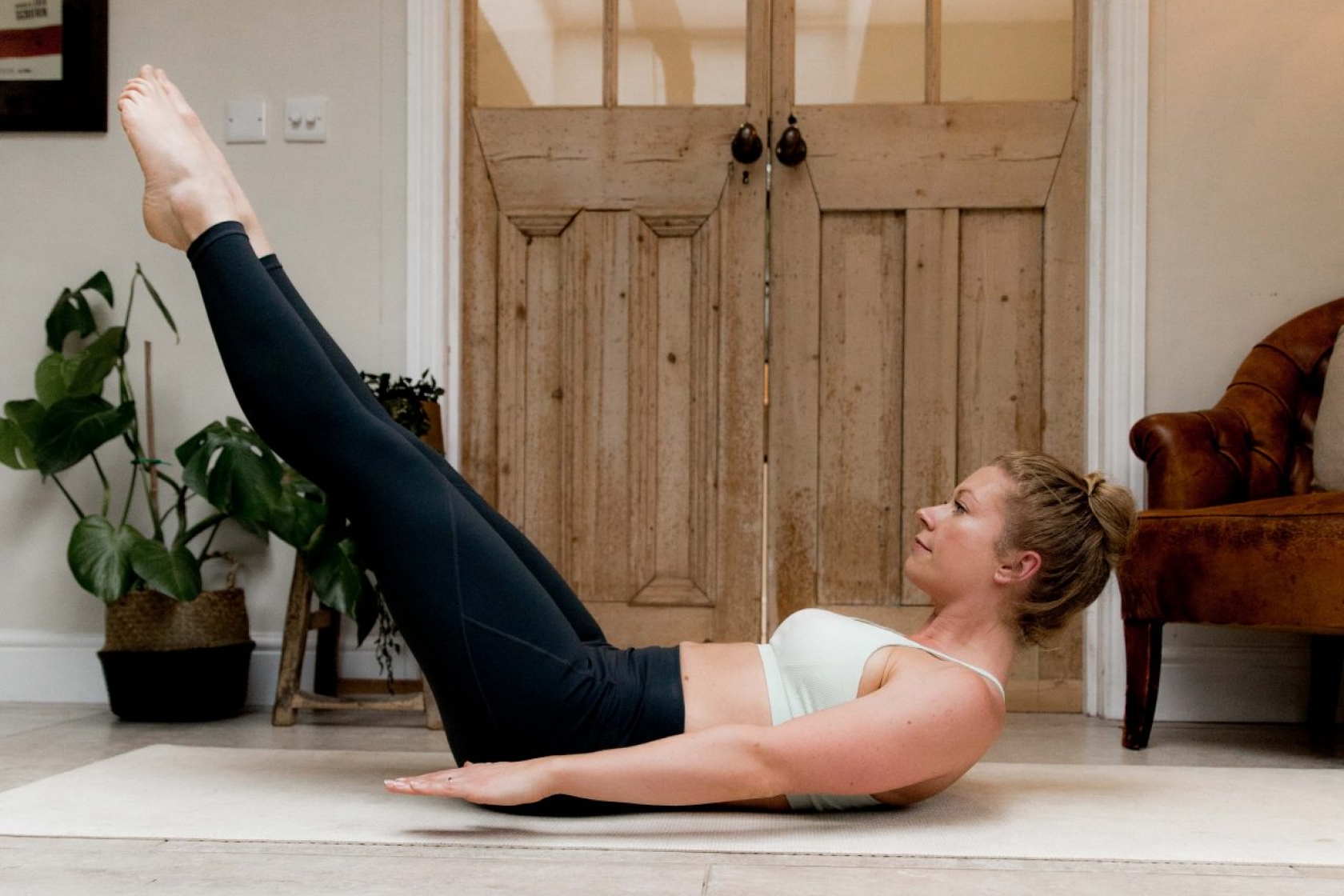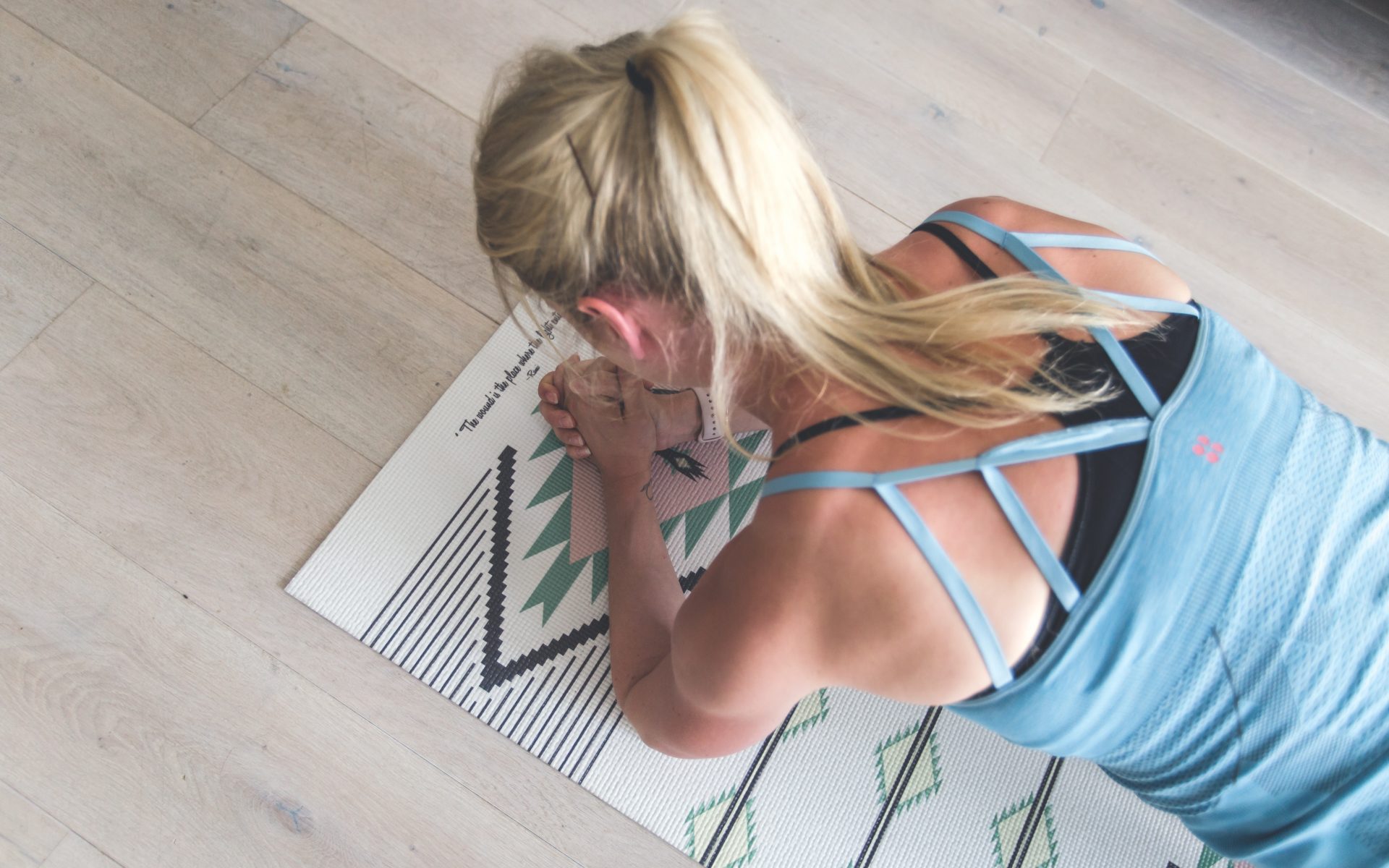There’s so much more to a core workout than just crunching your abs.
What follows when you roll out your yoga mat to do a core workout? Is it some variations of plank and crunches? If so, you’re actually completing an ab workout – not training your entire core.
But what’s the difference? Aren’t your core and your abdominals the same thing? While the muscles at the front of your trunk are a part of it, there’s more to working your core than just hitting your six-pack muscles.
You may also like
Strength training: 5 plank variations to strengthen your entire core
In fact, building an all-over strong core is essential. “We need to aim for a balance in our trunk,” explains Hollie Grant from The Pilates PT. “We tend to overuse the muscles that flex our spine forwards, because that targets the visible abs and that’s deemed ‘sexy’. But we spend all day in a flexed position looking at our laptops so, actually, we need to focus on the muscles that have weakened in our backs rather than just the muscles at the front.
In an ideal world, all of your core muscles work together to keep the spine in the position it’s designed to be in. “They should support your posture, ensure you don’t leak when you run, stop any pain and mean you can breathe properly,” says Hollie.
What is considered your core?
“Think of your core as a tube of Pringles – it wraps all the way around and there’s a top and bottom to it,” says Hollie.
The abdominal rectus
These muscles are what you think about when you think of your abs – running down the front of the stomach. “These are the most superficial muscles as they are closest to the front, meaning they can be visible if you have low enough body fat,” says Hollie. “The purpose of these muscles is to contract and flex the spine by pulling the ribcage closer to the pelvis.”
The obliques
These are divided into external and internal obliques, “which work at diagonals, with the external obliques running from the outer edge of the rib to your pubic bone, where your hands would be if you were putting them in your pocket. The internal obliques run diagonally opposite,” says Hollie. The obliques are involved in rotation of the spine, turning from side to side, and lateral flexion (bending side to side).

The transverse abdominis
“This is arguably the most important, because it wraps all the way around you like a corset,” says Hollie. “It meshes into the muscles of the lower back, stabilising the spine by pulling everything together and creating pressure which keeps you upright and your spine neutral.”
Multifidus
These muscles run vertically up the length of the spine, giving support to each disk. “They go from each vertebrae to the next, working against the abdominals – which flex you forward – to pull you back,” says Hollie.
Diaphragm
“This is what I think of as the lid of your core,” says Hollie. “It helps to maintain the balance of pressure in your abdominal cavity, while also controlling the breath.”
Pelvic floor
“This muscle sits at the bottom of your pelvis and is essential for core strength,” says Hollie. “It stops your internal organs from falling out and controls the passage of wind, poo and urine.”
You may also like
This back workout will help prevent back pain and strengthen your muscles
Are your glutes part of your core?
You may have heard that glutes can be part of your core – which is kind of true. “The more you delve into the muscles, you realise that no muscle really works in isolation as everything is connected with fascia, the connective tissue that wraps everything together.
While they aren’t considered part of those core muscles, the glutes control the pelvis so they are influential on the core muscles, Hollie explains. “For example, if someone has a curved lower back, called lordosis, strengthening the glutes can help because they will then tilt the pelvis back to where it belongs.
“It’s similar with the hip flexors – if we are sat down all day, these muscles remain in a shortened position so when we stand back up they struggle to lengthen out. That pulls the pelvis forwards which can arch the lower back and cause pain. However, hip flexors aren’t thought of as being ‘sexy’ in the way glutes are. We should probably think more about working the boring muscles such as the multifidus and flexors,” says Hollie.

Best all-over core exercises
“The most important thing is that you move your body through all of the potential directions so every muscle gets worked – not just moving through lots of flexion,” says Hollie.
Crunches
These are, of course, a type of flexion. And while Hollie points out that there’s more to your core than crunching, it is still important to build a strong rectus abdominal muscles – as long as they are balanced with the other exercises in this workout.
- Lie on your back with knees bent and feet flat on the floor, hip-width apart
- Place your hands at the base of your thighs or place your fingers on your temples with your elbows pointing out
- Pull your belly button to your spine and lift your upper body a few inches from the ground – sliding your hands up your thighs towards your knees (or staying on the temples). Only lift your head, neck, shoulders and upper back off the floor – your lower back should stay grounded.
- Slowly uncurl your upper back down onto the floor again.
You may also like
Strength training: 5 of the best oblique exercises to train your core and side body
Side plank
This is a form of lateral flexion, meaning it will be strengthening your obliques by bending through the side body.
- From a kneeling position, place your forearms on the floor with your elbows under your shoulders.
- Kick your legs back into a low plank position and then shift your weight onto your right forearm.
- Twist the chest and hips to open into your side plank, either stacking both feet on top of each other, placing both feet on the floor in a staggered stance or bending the bottom leg so your right knee rests on the floor.
- Push up through your obliques so your left hip is pressing up to the ceiling while your chest is open, shoulders are back and you’re squeezing your shoulder blades together.
- Repeat on the other side.
You may also like
How to do a bicycle crunch correctly for strong obliques
Bicycle crunch
This is a type of oblique rotation as you’re turning the spine from side to side.
- Lie on your back with your feet placed on the floor and bring your fingers to your temples, drawing your elbows back.
- Start imprinting the spine on your mat – this means drawing the belly button to your spine so there’s no space between your lower back and the floor.
- Bring your legs to tabletop position by lifting the feet off the ground so the legs are bent at 90 degrees with the calves parallel to the ground.
- Tuck the chin, then lift the head and shoulders away from the floor.
- Rotate your core to the left as you bring your right elbow across the body to touch your left knee, extending the right leg as low as you can.
- Returning the legs to tabletop, and then rotate to the right.
Spine extensions
- These will work in the transverse abdominals, multifidus and lower back.
- Lie on your stomach and place your hands behind your head.
- Keep your feet together and squeeze your glutes tight as you press your pelvis into the floor.
- Start lifting your head and chest off of the ground by squeezing through your back.
- Hold for a few seconds at the top and slowly lower back down.
Follow @StrongWomenUK on Instagram for the latest workouts, delicious recipes and motivation from your favourite fitness experts.
Images: Getty
Source: Read Full Article
